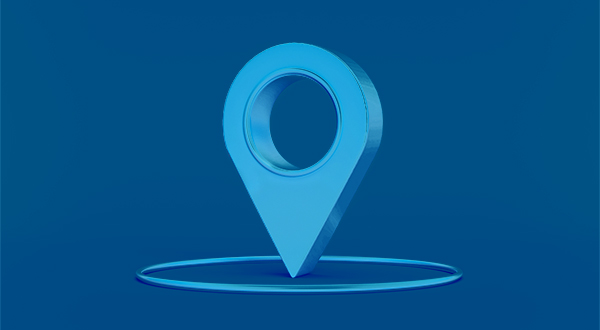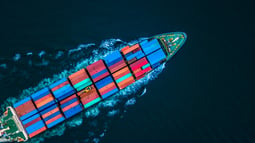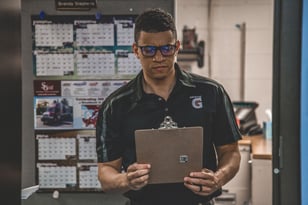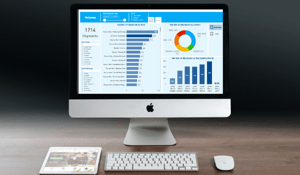Everything You Need To Know About Container Tracking
shippers, Collaboration, Data Intelligence, Visibility and Tracking, IoT in shipping
-3.png?width=600&name=New%20email%20covers%20(1)-3.png)
To export your goods, your containers travel extensively and pass through the responsibility of many different partners. Tracking in maritime transport is thus essential to successfully get your container through its journey at sea and to the front door of your customer. In this article, we will discuss tracking methods, how to deploy an effective tracking strategy, and how to improve exceptions management.
Why is container tracking so important?
Tracking plays an important role in your supply chain and allows you to react faster to exceptions, reduce costs, and provide more visibility to your customers. Here is a little bit more about the advantages that tracking brings:
Faster Delivery
Time is a crucial element for you as a logistics manager. The sooner you know about exceptions, the sooner you can react to them. Tracking your containers and getting notified from your carriers in real time will help you adjust to changes quicker when they occur and limit delays.
Cost Savings
Companies are often charged for demurrage & detention costs since their container is stuck on the port or an empty container return has been unexpectedly delayed.
Tracking containers, both at sea and inland, will help you reduce demurrage and detention costs. Every extra hour that a trucker waits for your container leads to extra expenses. By knowing and updating partners with the exact arrival time of the container, demurrage & detention costs are reduced.
Improved Customer Relations
With effective container tracking, you can also provide more visibility to your end customer with the location, status and ETA of your container. This will give them peace of mind, a greater comprehension, and the ability to adjust to changes on their side, all of which increases customer satisfaction.
What are the current tracking methods?
Logistics managers keep track of their container in two different ways: through updates coming from partners or through location tracking. Getting updates from your partners about the status of your container is essential, and verifying it with a satellite or IoT tracking is the extra layer of security.
Tracking with Carrier & Trucker Updates
Logistics managers usually verify each checkpoint that a container goes through with the implicated partner:
Road Transport
 As an empty container is being picked up, filled, and delivered to the POL, logistics managers actively check up with the trucker to make sure it is on time. This is usually done through a combination of phone calls, emails, and messages. Accessing this information is usually decentralized. It’s important to use a collaborative platform so you get all updates in one place, in real time.
As an empty container is being picked up, filled, and delivered to the POL, logistics managers actively check up with the trucker to make sure it is on time. This is usually done through a combination of phone calls, emails, and messages. Accessing this information is usually decentralized. It’s important to use a collaborative platform so you get all updates in one place, in real time.
Ocean Carrier
 Once your container is in the hands of your ocean carrier, you probably check your carrier’s website regularly to check updates and verify the ETA. The carrier notes a container as it is passed through each of the following checkpoints, as well as the Estimated Time of Arrival:
Once your container is in the hands of your ocean carrier, you probably check your carrier’s website regularly to check updates and verify the ETA. The carrier notes a container as it is passed through each of the following checkpoints, as well as the Estimated Time of Arrival:
The departures points
- The gate in time
- The load on time
- The vessel departure time
The transfer points
- The entry time in the transfer port
- The time the container is unloaded
- The time it is loaded on the transfer ship
- The vessel departure time
The arrival points
- The time the vessel arrives at the POD
- The time the container is unloaded
Tracking by Location
GPS/satellite & IoT
Known as an Automatic identification system (AIS), GPS and satellite tracking offer accurate real-time tracking through VHF radio waves. Similarly, IoT identifies the location of a container through various connection types. Even though these solutions can be quite costly and can require slightly complex engineering systems to locate containers accurately, they do give you extra visibility in your shipping operations.
Tips on how to deploy an effective tracking strategy
Remember: The status of your container is what’s important, the location is just an added bonus

If you have the budget to invest in satellite or IoT tracking, it’s great to do so. It allows you to verify that your container is indeed where your partner says it is. However, the most important is the knowledge is gained through updates coming from your carriers and truckers.
Tracking given by the various communication channels informs you not only of current delays, but also of expected and potential delays. This form of tracking gives you an eye into the future. Communication sharing also assures you of the status of your container, not just the location. For example, your container might be located at the port but not gated in, which means it might not be on time for the departure. That’s why being in touch with each checkpoint through partner updates is essential.
Tracking is only as good as your visibility
 To find out the status of a container, you probably have to exchange hundreds emails and messages, and check ocean carrier websites multiple times per day. This is already time consuming for one shipment, but when multiple containers come into play it becomes impossible to properly surveille containers in a way that will avoid risks and delays.
To find out the status of a container, you probably have to exchange hundreds emails and messages, and check ocean carrier websites multiple times per day. This is already time consuming for one shipment, but when multiple containers come into play it becomes impossible to properly surveille containers in a way that will avoid risks and delays.
No matter how good your partners’ communication is in updating you with the status of your container, if you are not able to be continually checking all the communication channels, the news won’t get to you on time. That’s why tracking can only be as good as your ability to be notified about exceptions.
How to increase visibility and improve exceptions management in container tracking
The main challenge in container shipping today is the ability to be properly notified about your containers’ status in one place because communication is spread over so many different channels. To track a container properly, you have to check your email and Whatsapp, your ocean carrier’s website, and your satellite tracking account. But what if all of these channels could be brought into one place?
BuyCo’s Container Shipping Platform allows you to be notified from all channels on one single collaborative platform. Here is a diagram that illustrates the power of BuyCo’s notification system for exceptions management:
![]()
BuyCo delivers you all the information you need to know from your road transport, ocean carriers, and your satellite tracking system in one place. You are then able to select which events you would like to be notified about.
This simplified exception management tool is collaborative so it allows you and all your partners to stay on the same page and avoid wasting time checking multiple different channels of communication.
How to turn container tracking into negotiation power
 Since BuyCo has an eye on each point that your container travels through, captured through the various channels, the platform saves a history of each container’s timeline. This means that you can see when and for how long the container has been under the charge of each partner. If you receive on extra expense for a delayed container, you’ll be able to look back through the history and verify the delay.
Since BuyCo has an eye on each point that your container travels through, captured through the various channels, the platform saves a history of each container’s timeline. This means that you can see when and for how long the container has been under the charge of each partner. If you receive on extra expense for a delayed container, you’ll be able to look back through the history and verify the delay.
All this data is then translated into powerful KPIs, giving you the ability to identify the exact statistics on your partners’ performance. This is powerful data to have when negotiation future tenders with your partners.
If you would like to learn more improving your supply chain, take advantage of our free personalized report to improve your container shipping (for a limited time only). Fill out 10 quick questions, and based on your responses, we'll identify the best strategies you could implement to optimize your specific processes.


